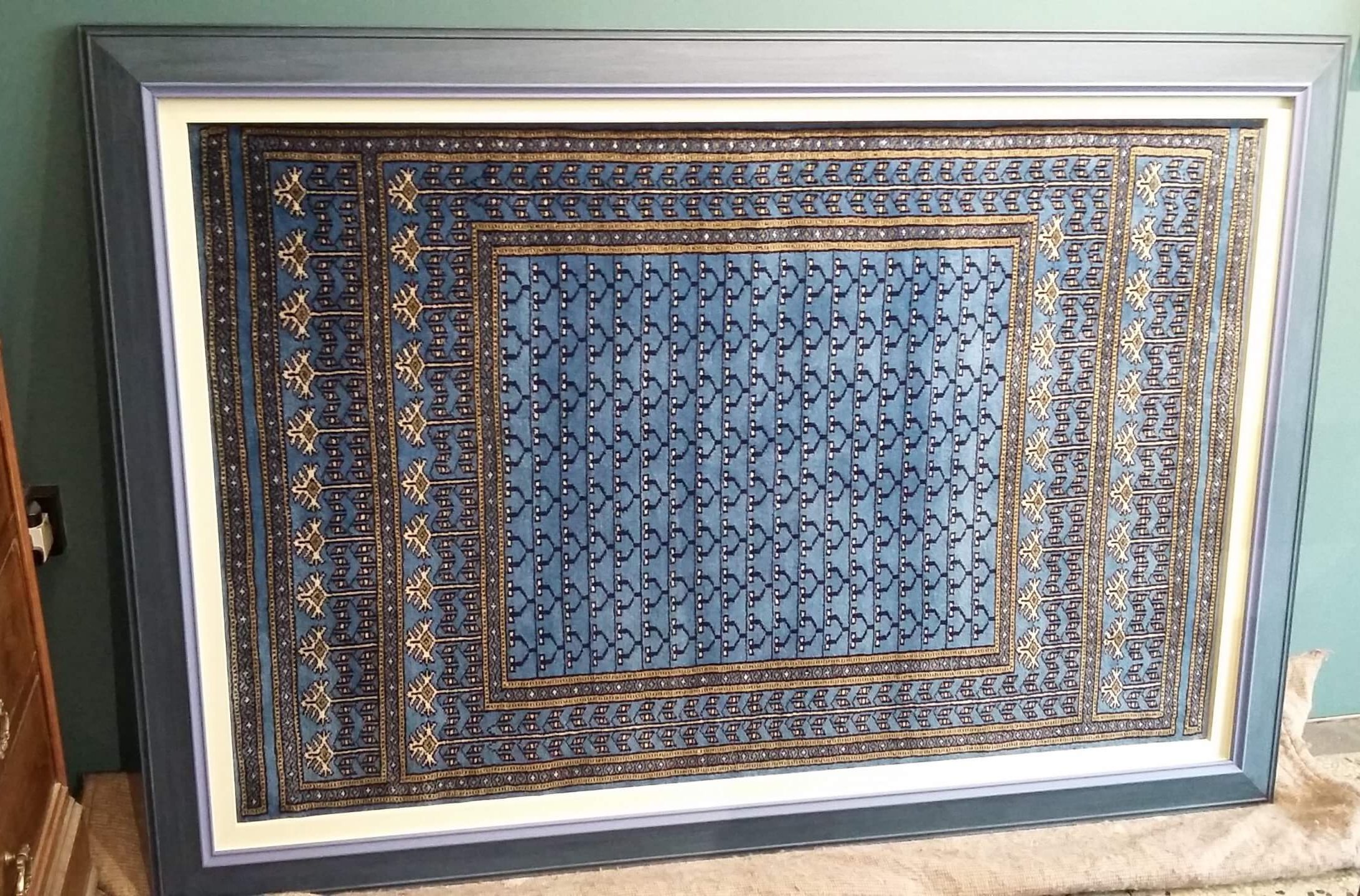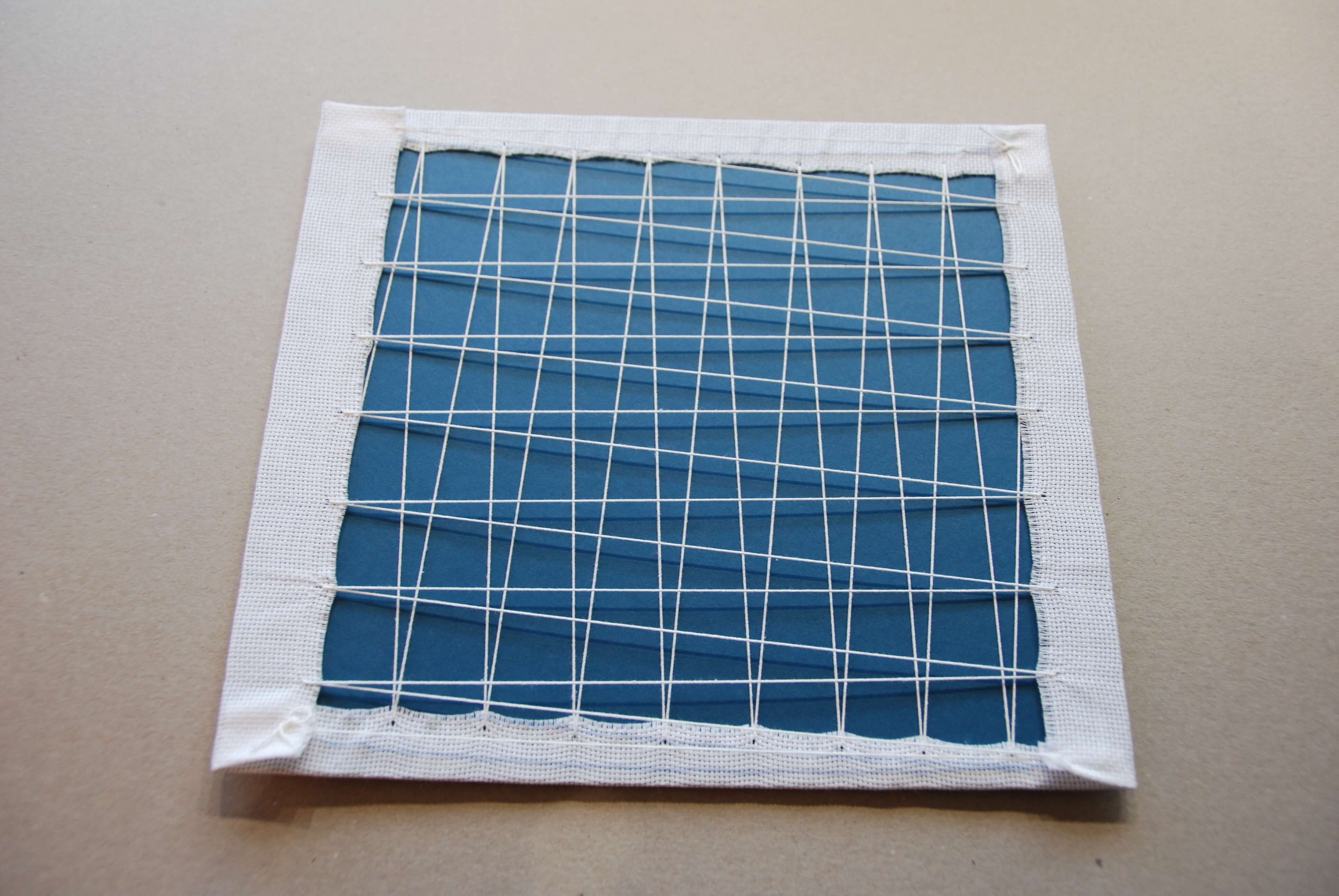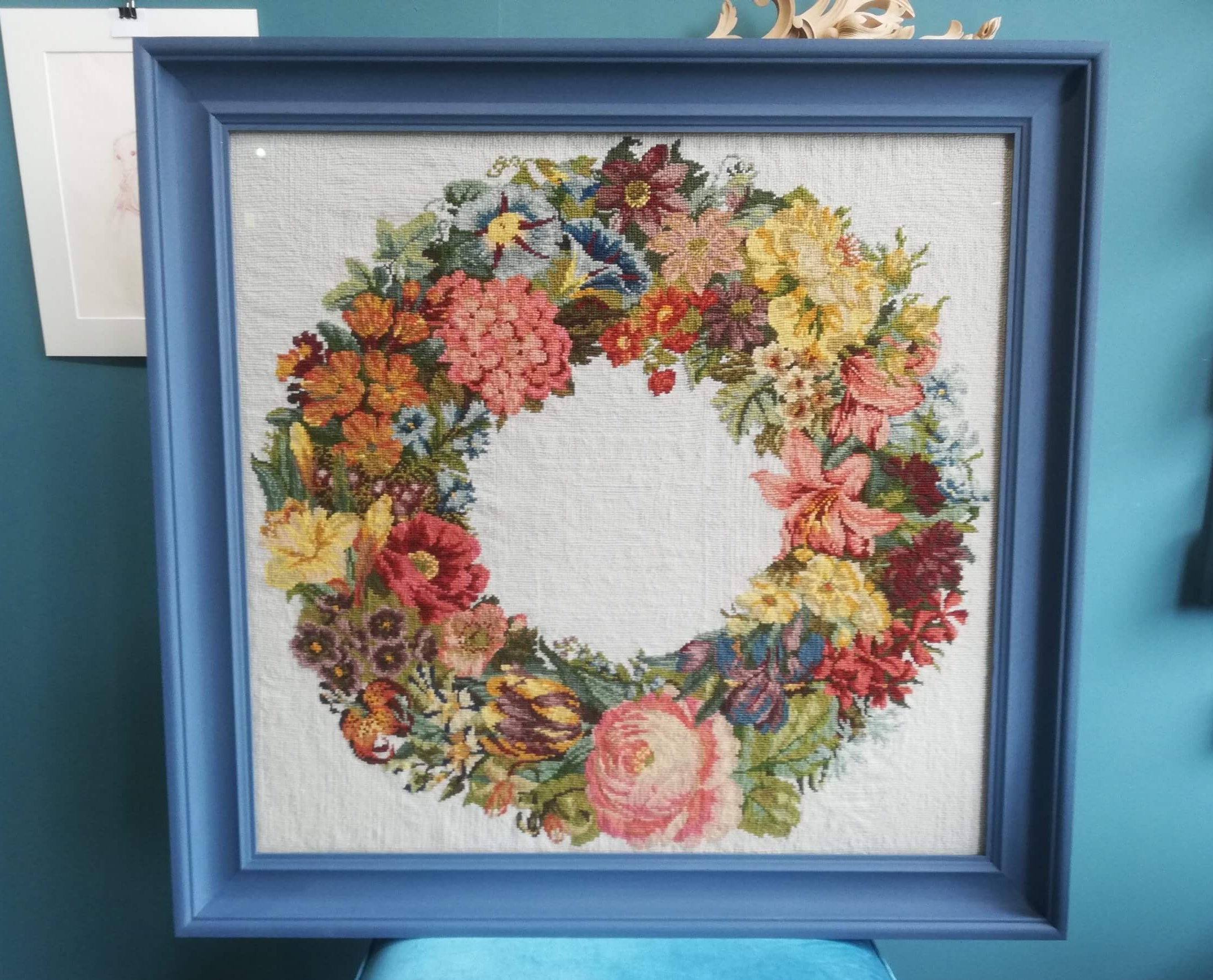
Textiles come in all shapes and sizes, so framing them requires careful thought. Framing textiles using the best conservation practice is a specialty of our framing practice.
Clients present us with a wide range of challenges when it comes to framing textiles. We have framed cross-stitches, tapestries, wedding headdresses, designer silk scarves, Indian carpets, baby clothes, and sports shirts, to name but a few. The list is endless, but when it comes to framing each type presents its own challenges, although there are some common themes.
When framing textiles it is important to follow the basic principles of conservation framing just as we do with all artworks we frame. We make sure that all the materials in contact with the artwork are free of acid so that the textile will be conserved for the future. For conservation, it is also important that the processes which are used are fully reversible, and we always aim to achieve this.

Although some objects need to hang and flow naturally to look their best, a common feature of framing textiles is to make sure that they are as flat as possible, without creases and any distortion. The key to achieving these goals is to use the appropriate stretching technique. We have a range of options from lacing over acid free mountcard and tagging, through to hand stitching and pinning. When you come and talk to us about framing textiles, we will advise you on the most appropriate technique for your particular artwork. This is crucial for the quality of the end result.

There are some other important considerations when framing textiles, for example, the dyes and colours in textiles are often prone to fading. We will advise you on the options for protecting them from the damaging effects of UV light by the use of specialist or conservation grade glass.
It is also generally important that the textile is kept away from contact with the glass. Using a mount or having spacers in the frame are two different methods of achieving this. The approach simply depends on the look you want and we can help you make this decision.